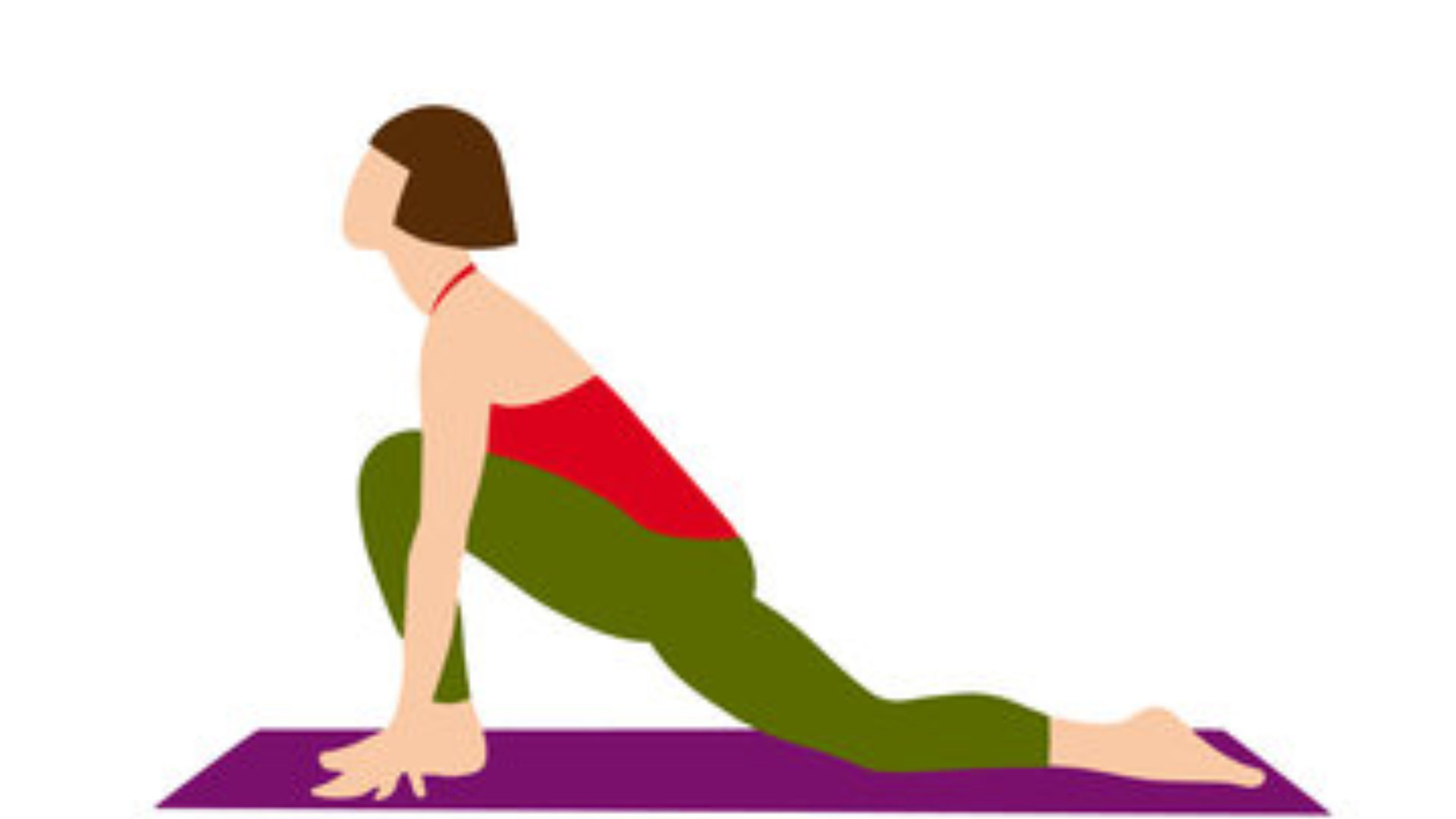
What is Ashwa Sanchalan Mudra
Ashwa Sanchalan Mudra is also known as the Equestrian Pose and is an integral part of most yoga sequences, including Surya Namaskar or Sun Salutation. It may seem like the easiest posture, but it has tremendous advantages-from digestion to gaining mental clarity.
How to do the Ashwa Sanchalan Mudra
Find Mountain Pose (Tadasana) End up standing tall with your feet hip-width apart and ground into the floor deeply. Make sure your spine is aligned with a relaxed feel in your shoulders.
Coming into Downward-Facing Dog (Adho Mukha Svanasana)
Coming from Tadasana, bend forward, place your palms on the floor, and step back to Downward-Facing Dog. Take a few deep breaths here, centering yourself.
Enter the Equestrian Pose (Ashwa Sanchalan Mudra).
From Downward-Facing Dog, inhale deeply, and then exhaling, step your right foot forward between your hands.
Bend your right knee, move your left leg back straight behind you, and the ball of your left foot digs into the mat while keeping your right knee in line over your ankle.
Keep your spine long and straight, with a slight forward angle of your face.
You will hold the weight of your body on the ground with both your hands. Alternatively, you can make use of the palms joined each other in a praying posture that you know is called Anjali Mudra to add intensity to it.
Static Hold –
Hold for 3 to 5 breaths and feel the stretch up to your hips and thighs and back. Breathe naturally but focus to balance and engage your core muscles.
Change Sides Exhale and step your right foot back into Downward-Facing Dog; repeat the same on the other side with your left foot forward. Both sides of your body are maintained in balance, thus symmetry.
Benefits of Ashwa Sanchalan Mudra
Physical Benefits:
Strengthens the legs and hips
Since this is a balancing stance where you need to hold your body weight by being in the lunge position, this exercise engages and strengthens your quads, hamstrings, calves, as well as hip flexors. In the long term, this enables you to have more sculpted and stronger legs while keeping you fully upright at all times.
Stretches the Spine and Back Muscles
Ashwa Sanchalan Mudra stretches and lengthens your spine lightly. This, in turn, makes your posterior muscles, i.e., back muscles, more flexible. It can remove stiffness, if the person has been sitting or working at a computer for long hours.
Digestion Improvement
And when in lunge, it stretches your abdominal organs; hence, digestion will be promoted, and chances of experiencing bloating and indigestion will be minimized. Deep breathing in this pose will stimulate your parasympathic nervous system, enhancing digestive function, too.
Improves Balance and Coordination:
It requires focus and stability because it enhances coordination in the long term. Whether you are an athlete or you want to enhance simple movements for your daily life, Ashwa Sanchalan Mudra makes a stronger stance of stability.
Improve Focus and Mental Clarity
The need for balance in this pose cultivates an individual’s ability to concentrate. One can even develop the practice of staying alert and attentive to their environment, which is a wonderful spillover effect out of the classroom and into daily life.
Reduces Stress and Anxiety
Like many yoga poses, Ashwa Sanchalan Mudra involves deep, conscious breathing, which usually calms the mind. This pose may help with the release of held tension, so it’s a great addition to any stress-reduction practice.
Confidence-Boosting .
The expanded chest from the posture somehow recreates confident posturing in some way. Practitioning Ashwa Sanchalan Mudra as a regular routine might unknowingly do more to build up your confidence and body language.
Spiritual Benefits:
Grounds Your Energy Ashwa Sanchalan Mudra is a grounding stance in which you always have one foot rooted in the earth with the other reaching out into space behind you. This posture grounds your energy, connects you to the energy of the earth around you, which sets up stability and balance.
Opens the Heart Chakra-Anahata
With your chest raised and your heart open, you awaken your Anahata Chakra- the love energy center that represents the energies of compassion as well as emotional balance. It is through this chakra that you find yourself more in tune with your emotions and those around when it is activated.
It’s Here Ganesha Mudra How to Do It and What are the Benefits
FAQs
1. Is Ashwa Sanchalan Mudra starter-friendly? Yes! This asana is beginner friendly though one could modify it to either flexibility or the level of strength in one’s body. Props like usage of yoga blocks soften the pose to comfort.
2. Is this mudra to be used during pregnancy? It depends. If you are familiar with yoga and your instructor is experienced, you can do some modification of this pose in the early stage of pregnancy. But it would be better to consult your doctor before attempting any kind of yoga during pregnancy.
3. How often should I practice this pose? Ideally, you can do Ashwa Sanchalan Mudra as part of your daily yoga practice or whenever you are doing a flow sequence such as Surya Namaskar. Practicing a couple of times in a week yields great benefits.
4. Common mistakes Probably one of the most common mistakes is that the front knee extends beyond the ankle. And the mistake then would be that the chest collapses, and this limits one of the fuller benefits of heart opening.

